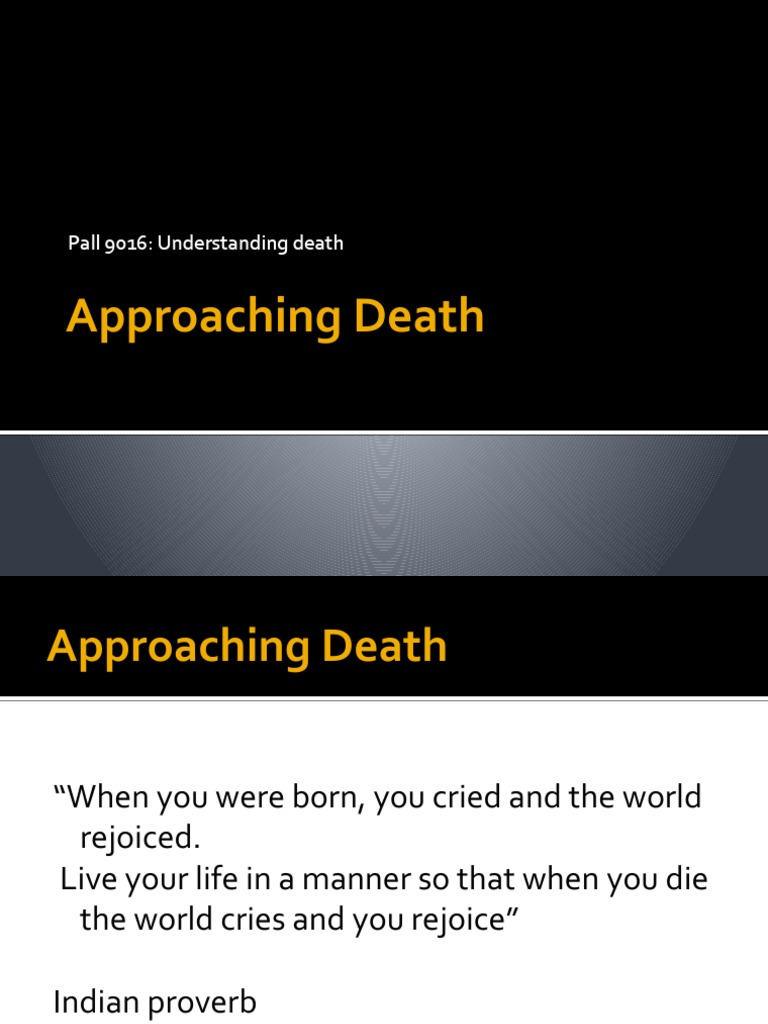Baha’i teachings offer profound insights into the nature of existence, attachment, and the inevitability of death. The concept of “letting go” is prominent within the Baha’i Faith, particularly as individuals approach the finality of life. This exploration seeks to dissect the delicate interplay between attachment and the spiritual exercises necessary for transcending earthly bonds as death approaches.
In a world enamored with the material, attachment manifests in manifold forms—relationships, possessions, aspirations, and more. Each attachment, while offering certain joys and comforts, can also engender suffering when confronted with the ephemeral nature of life. In contemplating mortality, individuals often grapple with the question of what it truly means to let go. How can one reconcile the intrinsic human desire for connection with the inevitable separation that death brings?
The Baha’i perspective posits that attachments can be both enriching and debilitating. The teachings emphasize the transient nature of the material world, framing life as a mere stepping stone towards a more exalted existence. This duality, the simultaneous celebration and relinquishment of earthly attachments, invites adherents to engage in a transformative process of spiritual development. The initial step towards this growth is often the recognition of one’s attachments.
Awareness of attachments unveils the duality of human experience. On one hand, relationships foster profound joy and companionship; on the other, they can induce anxiety in the face of death. The recognition of this paradox can catalyze a deeper inquiry into the nature of love and connection. Baha’is are encouraged to cultivate detachment—not as a repudiation of relationships but as a means to appreciate them more profoundly. The spiritual practice of detachment involves loving without clinging, fostering connections that thrive in the light of impermanence.
The principles of Baha’i teachings elucidate that true attachment should evolve into a spirit of service and selflessness. Thus, the conscious choice to let go of possessive attachments promotes an expansive love that is unbounded. This extension of love serves not only to enrich one’s own spiritual journey but also to elevate the collective consciousness of humanity. Engaging in acts of kindness and compassion allows individuals to transcend the constraints of selfish desires.
Furthermore, the Baha’i concept of the soul as eternal guides the discourse on attachment and death. The understanding that the soul continues its journey post-mortem provides comfort and directs focus away from the ephemeral. Thus, when death draws near, Baha’is are encouraged to view it as a passage rather than an end. Recognizing the soul’s eternal existence alleviates the fear surrounding death and fosters an acceptance of the inevitable transition.
The practice of prayer and meditation within the Baha’i Faith also serves as a conduit for letting go of attachments. Through prayer, one entreats the Divine for guidance, strength, and the ability to release grips on the material. This spiritual dialogue invites tranquility, facilitating a deeper connection with the Creator. In moments of reflection, individuals are encouraged to meditate on the impermanence of life, fostering an embrace of the fleeting nature of human endeavor.
Engagement with community is another cornerstone of Baha’i practice that aids in the process of letting go. As individuals come together to share their experiences, the collective understanding of life and death deepens. The fellowship formed within the community cultivates an atmosphere of shared wisdom, where individuals can support one another through the tumultuous phases of life. This shared journey fosters resilience and encourages the release of personal burdens as individuals witness the strength found in communal bonds.
In addressing the fear and grief associated with death, Baha’i teachings encourage individuals to reframe their understanding of loss. The concept of “renewal” is paramount. While physical loss may be palpable, the spiritual renewal of the departed can be a source of solace. Such teachings implore adherents to memorialize the departed not through mourning alone, but by celebrating the profound impact they have left on this temporal plane. Engaging in acts of remembrance and gratitude transforms loss into a celebration of the eternal journey of the soul.
Ultimately, the journey of letting go as death approaches encourages an evolution of the human spirit. Anchored by the tenets of the Baha’i Faith, individuals are invited to recognize that attachment and detachment are both intrinsic to the human experience. Each attachment brings lessons—of love, loss, growth, and ultimately, release. Through disciplined spiritual practice, Baha’is seek to cultivate a state of profound acceptance, facilitating the transition from material fixation to spiritual emancipation.
As one navigates the complexities of attachment and detachment, the insights gleaned from Baha’i teachings serve as a poignant reminder of life’s ultimate purpose: to grow spiritually, to love unconditionally, and to embrace the beauty of existence in all its forms. In doing so, individuals can approach the end of life not with dread, but with an open heart and a liberated spirit, preparing for the next stage of the eternal journey.
